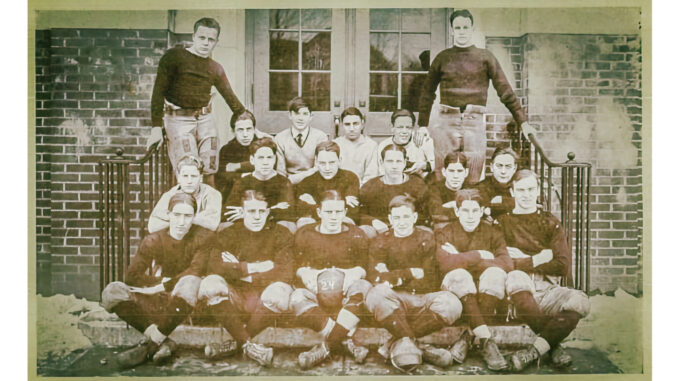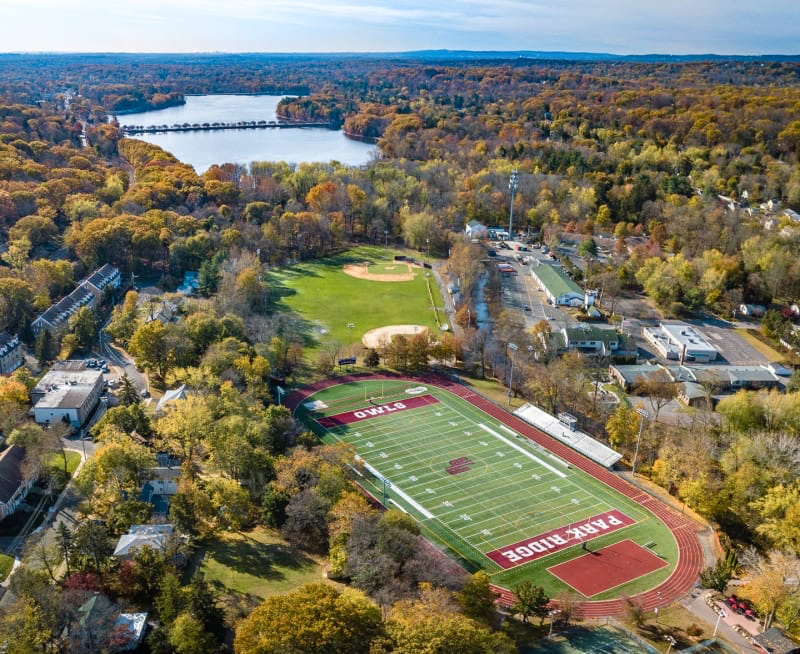
PARK RIDGE—Padding was minimal and helmets were optional back when Park Ridge High School’s football squad posed for this photograph a century ago, in the autumn of 1924.
The boys are wearing the uniform of the time, and a leather helmet belonging to one student (front row, third from right) is visible on the ground at his feet. The name Marshall is just legible on the helmet, so this must be sophomore William Marshall, who played right halfback.
At the time, the 1924 football season was lauded as the most successful in the history of the school. Park Ridge and Westwood were the only high schools in the Pascack Valley back then, and the season opened on Sept. 26 with the rivals battling it out. In a matchup held at Westwood’s field on Fourth Avenue, Park Ridge was victorious by a score of 13-6. The Owls chalked up their win to a brilliant aerial attack, each end receiving a long forward for a score. Westwood’s score was made in the last minutes of the fourth quarter.
It would be the first of many Owl wins that season. Despite not actually having a coach, the Park Ridge team was a force to be reckoned with. Veteran players John “Jack” Healey of Park Ridge (captain, quarterback), George Ihnen of Montvale (fullback), William Noonan of Montvale (center), Charles W. Nelson of Woodcliff Lake (left end) and Ted Wiesner of Park Ridge (manager, left guard) succeeded in whipping into shape a team that brought home six consecutive victories, including five shut-outs.
The first home game was on Oct. 9 against Pearl River. This would be the first shut-out of the season, with Park Ridge winning 12-0. Three more followed, as Park Ridge beat Bogota (7-0), Ramsey (14-0), the Hillsdale Young Men’s Club (22-0), and then Pearl River again (20-0).
The spell was not broken until Nov. 22, when Park Ridge took on Dumont. The two teams tied, 6-6, after Dumont made a touchdown during the fourth quarter, by which time the sun had set and the boys were playing in the dark. Park Ridge sophomore James Maher, left halfback, saved the day by blocking Dumont’s try for a point.
Whether games were played at home or away, the team was always accompanied by an enthusiastic group of rooters to cheer them on. At the end of the 1920s, marching band and cheerleading were organized as official extra-curricular activities.

